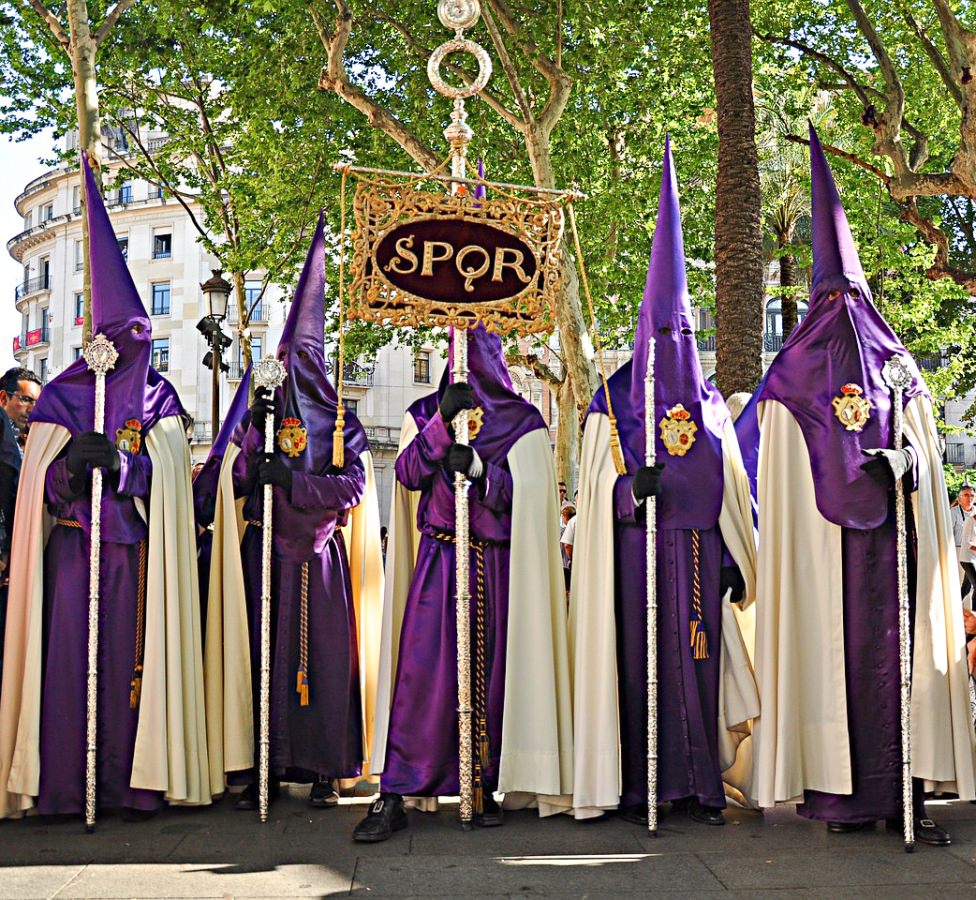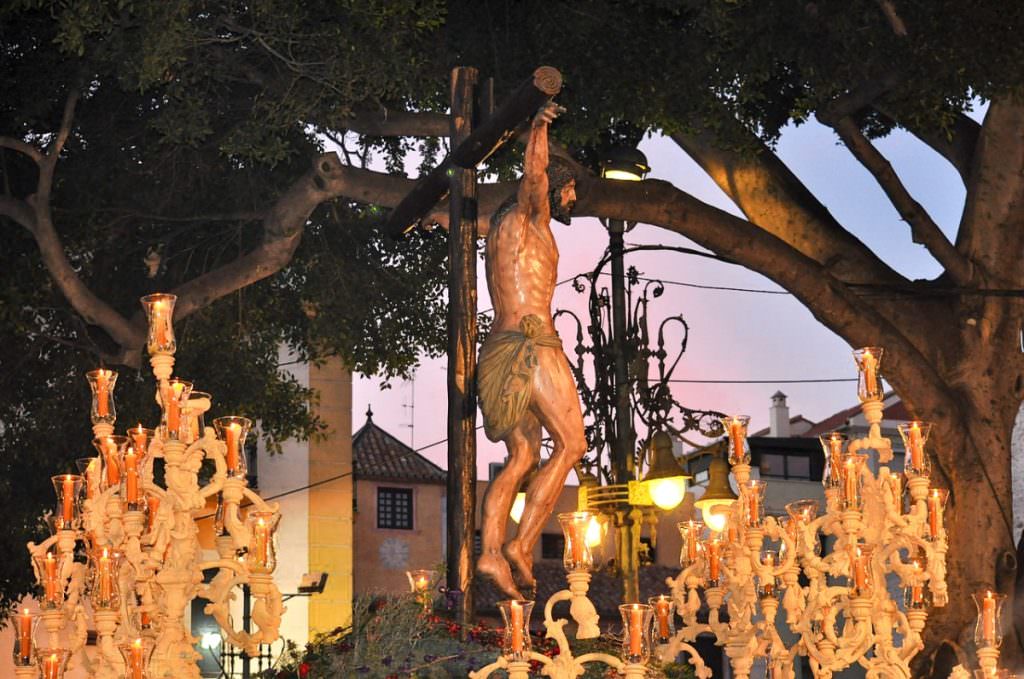Make the most of Easter in Spain
Tips for Easter in Spain
Easter, or Semana Santa in Spanish, is the most important religious holiday of the country. More important than Christmas and it also lasts a lot longer. Although the word ‘semana’ (week) indicates a week, the entire festivities cover more like two weeks, during which time most of public life grinds to a halt. Everybody is gearing up to the highlights of the processions, ruled by passion and anticipation. Easter in Spain is a large event and quite a spectacle.

Official Easter schedule 2024:
Domingo de Ramos March 24th – Palm Sunday
On this Sunday, people carry palm leaves and flowers to their churches to decorate their favorite icons of Christ and the Virgin Mary who are of course the center figures of Semana Santa.
Lunes Santos March 25th
Martes Santos March 26th
Miercoles Santos March 27th
Jueves Santos March 28th
Viernes Santos (Good Friday) March 29th
Sabado de Gloria March 30th
Domingo de Resurrection March 31st – Easter Sunday
Lunes de Pasquas April 1st- Easter Monday
Add on a few days after Easter Monday before life returns to normal. Yes, this means Easter in Spain, or the Semana Santa lasts over one week. It is more comparable to the Christmas/Holiday Season that stretches over weeks as well.

Where to Watch the Easter Processions in Spain
Semana Santa in Seville
The most famous location to submerge yourself into the world of this extraordinary spectacle is, of course, Seville. However, if you plan to spend the entire time there you are probably already too late. Bear in mind that approx. 1 Mill visitors come to Seville during Semana Santa and they all have to stay somewhere. Hotels are booked out up to a year in advance and so self-catering apartments.
During the entire Semana Santa there are 8 to 9 processions a day, some, like the famous Macarena the adored patron saint of Seville, leave their church at night. Accompanying the massive floats which carry the richly adorned icons, are the so called ‘nazarenos’ members of one of nearly 300 brotherhoods in Seville, all dressed in colorful robes, their heads covered with pointed hats leaving only slits for eyes and mouth, carrying huge lighted candles at night. Trumpets and drums direct the path around the city which often takes 11 to 14 hours. Many walk barefoot as a sign of atonement for sins. The floats are carried by men called costaleros who walk underneath fortified with corsets and neck and shoulder padding to be able to carry the heavy load for hours.

The crowds lining the paths of the various processions are dressed in their finest, women often in black with a mantilla and high comb in their hair, small kids dressed as priests and as soon as one virgin leaves her church, the words spreads ‘she is coming’ until it reached roar level and people even surge forward to touch or kiss the hem of her gown.
It is an incredible spectacle but also very noisy and can be distressing to people with claustrophobia because once trapped in the crowd, there is no way out.
There are however less stressful alternatives. Sierpes street is lined with chairs you can hire, but, needless to say, they are in high demand. Several locals hire out their balconies so you can watch from above, but again, it’s difficult to find. Or you can stand on the Triana Bridge.
There is one hotel called Adriano in Triana has rooms with balconies where you can watch in peace. But again, it may well be booked out already.

Alternatives to Seville
Instead of spending the entire festivities in Seville, you can opt for a day trip. Only 1 hour by train away is the wonderful city of Cordoba. Her many monuments, among them The Great Mosque and the bridge over the river Guadalquivir will enchant you and you can combine two exceptional Spain experiences. Trains run frequently and normally even during Semana Santa.
Closer to Seville and with a spectacular Semana Santa celebration all of its own is the much smaller town of Osuna.
A curiosity: Part of Games of Thrones was filed here. Or else, you might opt for Carmona.
Hotels in all these locations are much cheaper and there will still be rooms available and you can avoid the less pleasant aspects of Semana Santa in Seville.
Semana Santa outside Andalusia
It’s not only the south of Spain where passions run high during Semana Santa, so you might want to consider the festivities in Valladolid or Toledo.

Things to consider for Easter in Spain
As I said at the beginning, during Semana Santa public life more or less grinds to a halt, regardless of where in Spain you are. Shops generally close during the afternoon, all are closed on Good Friday and Easter Monday. Otherwise, they do very much as they please. Open in the morning anytime between 10 am or 11 am. Supermarkets and big department stores are usually open all day, but also not on Good Friday, and Easter Sunday and Easter Monday.
Banks are a tricky matter too. They are never open in the afternoon or on Saturdays and certainly not on the most important days of Semana Santa. The same applies to the post office or any other ‘official’ institution even museums have different opening hours during Semana Santa. ATMs have been known to run out of cash or be out of service, make sure you always carry some emergency cash so you can at least pay for a drink or a meal.
Talking about food: bars and restaurants, at least in Seville, are open nearly around the clock because they make more money during Semana Santa than the rest of the year.

Precautions and Tips for Easter in Sapin
Whether you opt for a day trip to Seville or spend the entire time there, wear sturdy and comfortable shoes or boots. You’ll be standing by the roadside for hours and, if you want to watch the Macarena go by, all night. Carry snacks and plenty of water.
Where there are crowds, there are pickpockets. They are extremely skilled in slicing pockets and straps with razor blades, so even a bum bag is not much use. It can be gone before you even notice. Inside pockets in thick coats or jackets are the only solution. Carry a copy of your passport at all times and only the essential money. Maybe one credit card with the lowest limit.
Warm clothing is essential because the weather at this time of year can be tricky. It will definitely be cold at night and it might rain during the day. If this happens, the processions will be canceled so the precious floats and their icons don’t get wet.
Get a route map from the tourist office and consult the local paper. You can understand the weather report even if you don’t speak Spanish.
After all the festivities are over, the icons are returned to their home church, stowed away covered in dust sheets to await their next outing in a year’s time. In some of the cake shops, you might even see a chocolate Easter bunny with a bow around its neck, Spain’s reverence to the many foreigners who come for a unique Spain experience.
Have a great Easter in Spain.
Easter in Spain was written by and photos by Inka Piesga-Quischotte for EuropeUpClose.com
Pin for Later – Easter in Spain:


Ruth Kozak
Saturday 8th of April 2017
Hi Inka, nice story and beautiful photos. Well done! And Happy Easter, Kalo Paska.